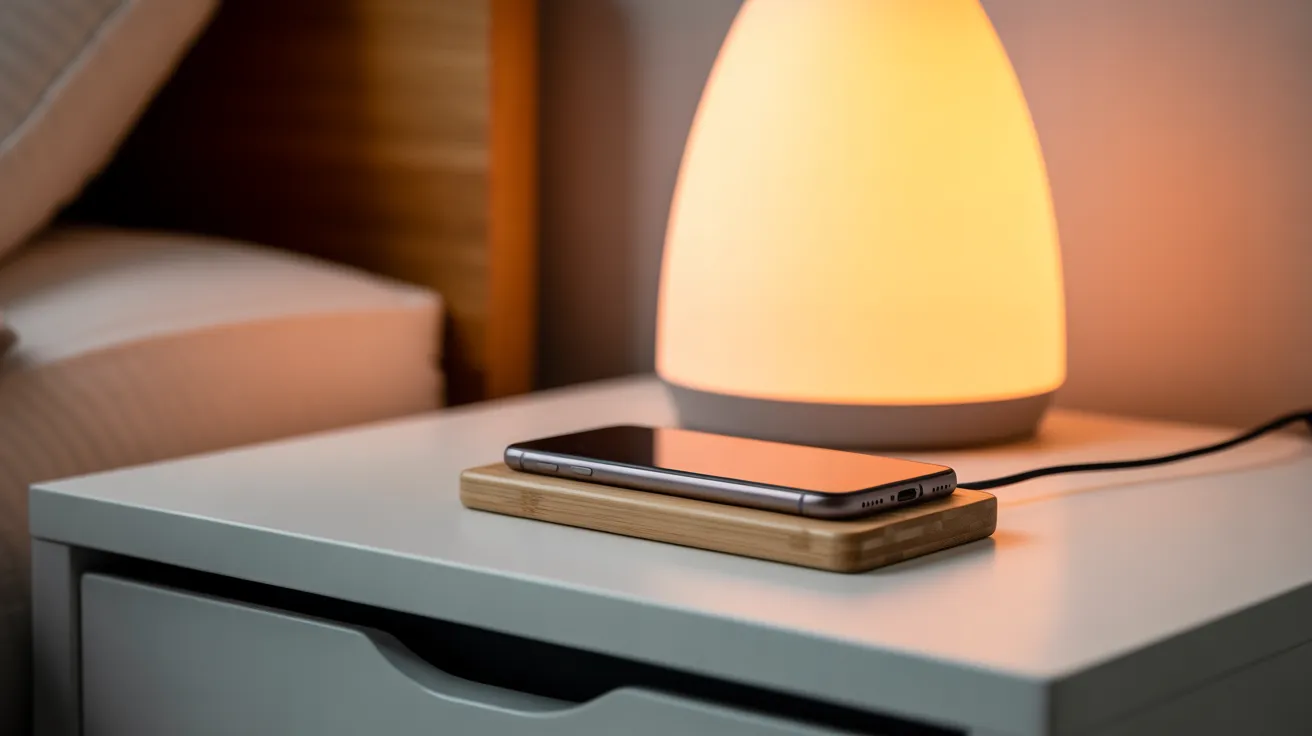
You know the feeling. It starts with a quick check of one notification, and suddenly, forty-five minutes have vanished into a blur of headlines, status updates, and short videos. Your thumb is tired, your eyes are strained, and a vague sense of unease settles in. You didn’t accomplish anything, yet you feel strangely depleted. This is the hidden cost of mindless scrolling: our time, our focus, and our peace of mind.
In our hyper-connected world, the idea of abandoning technology is both unrealistic and undesirable for most. Our phones are our maps, our contact lists, our cameras, and our connection to loved ones. The goal isn’t to demonize the device but to reclaim our relationship with it. It’s about shifting from a reactive, passive consumer of content to an intentional, mindful user of a powerful tool.
This guide is for you—the person who wants to build healthier tech habits without going completely off the grid. We’re not suggesting you throw your phone into a river. Instead, we’ll explore practical, engaging, and fulfilling alternatives to scrolling that can help you win back your attention and find more joy in your offline life. We will explore not just what to do instead, but why it’s so hard to stop in the first place, and how to build systems that make the better choice the easier choice.
📚 Table of Contents
- Why Is It So Hard to Stop Scrolling? The Science of Distraction
- 10 Fulfilling Things to Do Instead of Mindless Scrolling
- 1. Engage in a Tactile Hobby
- 2. Read a Physical Book or Magazine
- 3. Practice Mindful Listening
- 4. Stretch or Do a Short Bodyweight Workout
- 5. Tidy One Small Space
- 6. Write in a Journal
- 7. Prepare a Simple Meal or Drink
- 8. Connect with a Pet
- 9. Daydream or Simply Do Nothing
- 10. Plan Something Enjoyable
- Building Your Digital Fortress: Proactive Routines and Environments
- Putting It Into Practice: Real-World Scenarios
- Navigating Common Challenges
- Handling Relapse Moments
- Managing FOMO (Fear of Missing Out)
- Social and Professional Expectations
- Making Exceptions Intentionally
- Frequently Asked Questions
- Your First Steps Toward Intentional Tech Use
Why Is It So Hard to Stop Scrolling? The Science of Distraction
If you’ve ever felt a magnetic pull toward your phone, even when you know you should be doing something else, you’re not experiencing a personal failure. You’re experiencing meticulously engineered psychology at work. Understanding the mechanism behind this pull is the first step toward breaking free from it.
At the heart of this experience is a powerful brain chemical called dopamine. Often called the “feel-good” neurotransmitter, dopamine is more accurately described as the molecule of motivation and reward. It’s released when we anticipate something pleasurable, which encourages us to repeat the behavior. This system is essential for survival, motivating us to seek food, water, and social connection.
Modern apps have learned to hijack this system, creating what is known as a dopamine loop. This is a three-part cycle: a cue, a routine, and a reward. Your phone buzzes (the cue). You pick it up and open an app (the routine). You see a “like,” a new message, or an interesting video (the reward). This small hit of dopamine makes you feel good for a moment, reinforcing the habit and making you more likely to respond to the next cue.
Social media and content apps are designed to make this loop as compelling as possible through features like:
Variable Rewards: The “pull-to-refresh” function on a social media feed is like a slot machine. You don’t know what you’re going to get—it could be something amazing, something boring, or nothing at all. This unpredictability is highly compelling and keeps you coming back for another “spin.” Research from organizations like the American Psychological Association (APA) highlights how this type of reinforcement schedule is particularly powerful in forming habits.
Infinite Scroll: By removing natural stopping points like the bottom of a page, apps eliminate a crucial moment where you might pause and decide to do something else. The content never ends, so your scrolling doesn’t have a natural conclusion. This design choice fosters passive consumption and makes it easy to lose track of time.
Social Validation: Likes, comments, and shares are digital forms of social approval. Each notification is a small signal that you are seen and valued by your community. This taps into our fundamental human need for belonging, making it incredibly difficult to ignore. The fear of missing out, or FOMO, is a powerful driver that keeps us tethered to these platforms.
Recognizing these patterns is not about blaming developers or feeling helpless. It’s about empowerment. When you understand that your urge to scroll is a triggered response in a manufactured loop, you can begin to consciously interrupt it. This awareness transforms the struggle from one of willpower against a mysterious force to a strategic effort to dismantle a predictable system. You can start to find effective alternatives to social media that provide genuine, lasting fulfillment instead of fleeting digital rewards.

10 Fulfilling Things to Do Instead of Mindless Scrolling
The key to breaking the scroll cycle is to have appealing, low-friction alternatives ready. When the urge to scroll strikes—often born of boredom, anxiety, or transition moments—you need a better option that is just as easy to start. Here are ten simple, effective, and screen-free activities to try.
1. Engage in a Tactile Hobby
Mindless scrolling is a disembodied experience. Reconnect with your sense of touch. Activities like knitting, sketching, solving a Rubik’s cube, practicing calligraphy, or even sorting a jar of coins engage your hands and mind in a focused, gentle way. The physical feedback is grounding and provides a sense of accomplishment that a digital “like” cannot replicate. Keep a small project, like a sketchbook and pencil or a ball of yarn, where you typically scroll the most.
2. Read a Physical Book or Magazine
The act of reading on paper is fundamentally different from reading on a screen. There are no hyperlinks to pull you away, no notifications to interrupt your flow. A physical book provides a singular, immersive experience. It slows your brain down and encourages deep focus. If a whole book feels intimidating, start with a magazine, a collection of short stories, or a book of poetry. The goal is to lose yourself in a world that isn’t pixelated.
3. Practice Mindful Listening
We are constantly bombarded with visual stimuli. Give your eyes a rest and focus on your sense of hearing. Put on a favorite album—not as background noise, but as the main event. Close your eyes and truly listen to the instruments, the lyrics, the textures of the sound. Alternatively, listen to a podcast that requires your full attention, or simply sit by an open window and identify the sounds of your environment: birds, traffic, the wind. This is a simple form of meditation that anchors you in the present moment.
4. Stretch or Do a Short Bodyweight Workout
Scrolling often happens when we are sedentary. Counteract this by moving your body. You don’t need a full gym session. Just five to ten minutes of gentle stretching can release physical tension built up from sitting. Simple bodyweight exercises like squats, push-ups against a wall, or holding a plank can quickly shift your mental and physical state. The rush of endorphins provides a natural mood boost and helps break the lethargic feeling that often accompanies excessive screen time.
5. Tidy One Small Space
The digital world is chaotic and infinite. Bringing order to your physical environment can be incredibly calming and satisfying. Don’t try to clean the whole house. Instead, pick one small, manageable space: clear your coffee table, organize a single drawer, wipe down the kitchen counter, or arrange the books on your nightstand. This activity provides a clear beginning, middle, and end, resulting in a visible, tangible improvement that feels productive and grounding.
6. Write in a Journal
Your phone is a tool for consuming the thoughts of others. A journal is a tool for understanding your own. When you feel the urge to scroll, grab a notebook and pen and perform a “brain dump.” Write down whatever is on your mind—your worries, your to-do list, a funny memory, a vague feeling. This act of externalizing your thoughts can bring clarity and relief. It’s a way to process your own life instead of passively observing the curated lives of others.
7. Prepare a Simple Meal or Drink
Engage your senses of taste and smell. Instead of scrolling while waiting for water to boil, become fully present in the act of making something. Brew a cup of tea with intention, noticing the aroma and the color. Prepare a simple snack, like slicing an apple and arranging it on a plate. The ritual of preparation is a mindful practice that nourishes your body and focuses your attention on a singular, rewarding task.
8. Connect with a Pet
If you have a pet, they are a living, breathing antidote to digital distraction. Take five minutes to groom your cat, throw a ball for your dog, or simply sit and stroke their fur. The unconditional affection and physical connection with an animal can lower stress and provide an immediate sense of joy and companionship. They pull you directly into the present moment with their simple needs and affections.
9. Daydream or Simply Do Nothing
Our culture has become allergic to boredom. We treat any moment of empty space as a void to be filled with content. Resist this urge. Allow yourself to be bored. Stare out the window, watch the clouds, or just sit quietly and let your mind wander. This is not wasted time; it’s essential time for creativity, problem-solving, and mental rest. True boredom is the soil from which new ideas and self-reflection grow.
10. Plan Something Enjoyable
Channel your forward-looking energy into something that will bring you genuine future joy. Instead of scrolling through vacation photos of strangers, use a notebook to plan your own future trip, even a small one. Outline a project you want to start, make a list of friends you want to call this week, or plan a delicious meal you’d like to cook. This replaces passive consumption with active, hopeful planning for your own life, making it one of the most productive screen-free activities you can choose.

Building Your Digital Fortress: Proactive Routines and Environments
Fighting the urge to scroll moment by moment is exhausting. A more effective, long-term strategy is to design your digital and physical environments to support your goals. By creating gentle friction for distracting habits and removing barriers for better ones, you make mindfulness the path of least resistance. This is less about willpower and more about smart system design.
Curate Your Digital Space
Your phone’s home screen is prime real estate for your attention. Treat it that way. Instead of letting it be a chaotic portal to every distraction, turn it into a calm, intentional tool.
Design a Minimalist Home Screen: Move all distracting apps (social media, news, games) off your main home screen and into a folder on the second or third page. This simple act of adding an extra swipe or two is often enough to break the unconscious “open and scroll” habit. Your primary screen should only contain utility-based apps like your calendar, maps, notes, and phone.
Practice Notification Triage: Notifications are the primary weapon of the attention economy. Take back control. Go into your phone’s settings and turn off all notifications except for those from actual people—like text messages and phone calls. For everything else, practice notification batching. This is the act of checking your apps on your own schedule (e.g., once in the morning and once in the evening) rather than being constantly pulled away by their alerts.
Use Focus Modes and App Timers: Modern smartphones have powerful built-in tools. Use them. Set up “Focus Modes” (or DND, for “Do Not Disturb”) for specific activities like work, reading, or family time. These modes can filter which apps and people can reach you. Additionally, set daily time limits for your most-used apps. When the timer runs out, it serves as a powerful reminder to disengage and choose a different activity.
Design Your Physical Environment
Your surroundings send powerful cues to your brain about how to behave. By consciously designing your physical space, you can promote healthier tech habits and create sanctuaries for focused work and rest.
Establish Screen-Free Zones: Designate certain areas of your home as permanently phone-free. The two most effective zones are the dinner table and the bedroom. Mealtimes become opportunities for genuine conversation, and the bedroom becomes a sanctuary for rest and intimacy. This boundary is simple, clear, and incredibly effective at restoring balance.
Create a Sleep-Friendly Evening Routine: The light from our screens can interfere with our natural sleep cycles. Specifically, the blue light they emit can suppress the production of melatonin, the hormone that signals your body it’s time to sleep. As noted by experts at the Sleep Foundation, this can make it harder to fall asleep and reduce sleep quality. An hour before bed, put your phone away. Charge it across the room, or even in another room entirely. This removes the temptation for a final “just one more scroll” and protects your precious rest.
Implement Deep Work Cues: If you work from home, it’s easy for the lines between focused work and distraction to blur. Create a clear environmental cue that signals to your brain it’s time to concentrate. This could be putting on a specific pair of noise-canceling headphones, lighting a particular candle, or moving to a designated “work-only” chair. When the cue is present, your phone should be out of sight and on silent. This helps train your focus like a muscle.

Putting It Into Practice: Real-World Scenarios
Theory is one thing; real-world application is another. Let’s walk through two common scenarios where a little bit of planning can make a huge difference in breaking the cycle of mindless scrolling and initiating a mini digital detox.
The 10-Minute Evening Wind-Down
The goal here is to replace the pre-sleep scroll with a calming ritual that signals to your body and mind that the day is ending. This helps improve sleep quality and reduces the anxiety that can come from late-night news or social media consumption.
Minute 0-1: The Transition. One hour before your planned bedtime, your phone alarm goes off with the label “Begin Wind-Down.” You stand up, plug your phone in to charge across the room, and turn it to silent.
Minute 1-3: Tidy Your Space. Perform a small “closing ceremony” for the day. Put away your cup, straighten the pillows on the couch, and put your work materials away. This creates a sense of closure and order.
Minute 3-7: Engage in a Gentle Activity. Choose one of the screen-free alternatives. Perhaps you do a few simple stretches on the floor. Or maybe you sit with a cup of herbal tea and simply watch the steam rise. The key is that the activity is simple, calming, and requires no screens.
Minute 7-10: Reflect or Plan. Grab a notebook. Spend the last few minutes writing down one thing you’re grateful for from the day. Alternatively, write down the three most important things you need to do tomorrow. This gets the thoughts out of your head and onto paper, allowing your mind to rest.
After these ten minutes, you can proceed with the rest of your bedtime routine (brushing teeth, etc.) feeling calmer and more disconnected from the digital world’s relentless hum.
A Realistic Weekend Digital Detox
A full weekend without any technology is not feasible for most people. A realistic digital detox focuses on intentionality, not deprivation. The goal is to spend the majority of your time offline, using your devices only for specific, planned purposes.
Friday Evening: Set the Stage. Before the weekend begins, let close friends and family know you’ll be less available. Say something like, “I’m trying to be on my phone less this weekend, so if you need me urgently, please call!” Then, delete the one or two apps that are your biggest time-wasters. You can always reinstall them on Monday.
Saturday: The “Analog Morning” and “Scheduled Check-in.”
Morning (e.g., 8 AM – 12 PM): Keep your phone on airplane mode or in another room. Start your day with analog activities. Read the newspaper or a book with your coffee. Go for a walk or a run without headphones. Cook a proper breakfast. Engage in a hobby. The goal is to get through the entire morning without a single scroll.
Afternoon (e.g., 1 PM): Schedule a 15-minute “check-in.” Set a timer. During this time, you can respond to important messages, check the weather, or look up directions. When the timer goes off, put the phone away again.
Rest of the day: Plan an engaging, offline activity. Visit a museum, work in the garden, play a board game with family, or meet a friend for a walk. Use your phone only as a tool (e.g., for navigation) and not as entertainment.
Sunday: Repeat with Flexibility. Follow a similar structure. Enjoy another analog morning. Maybe your scheduled check-in is a bit longer to plan for the week ahead. The key is that you are deciding when and why you use your phone, rather than the other way around.
This approach helps reset your brain’s reward system. You rediscover the joy of uninterrupted focus and the richness of the world beyond the screen, reducing the feeling of phone addiction and building confidence in your ability to disconnect.

Navigating Common Challenges
Building new habits is a journey, not a destination. You will encounter obstacles and moments of backsliding. Anticipating these challenges and having a plan for them is crucial for long-term success. It’s not about perfection; it’s about persistent, compassionate effort.
Handling Relapse Moments
You will have a day where you scroll for an hour without realizing it. It’s inevitable. The most important thing is how you react. Instead of seeing it as a failure, treat it as a data point. Get curious. Ask yourself: What triggered this? Was I feeling stressed, bored, lonely, or tired? Recognizing the underlying emotion is key. When you know the trigger, you can find a more effective, non-digital way to address that feeling next time. Forgive yourself and simply begin again with your next choice.
Managing FOMO (Fear of Missing Out)
When you first reduce your social media use, the fear of being out of the loop can be intense. You might worry about missing an important event, an inside joke, or a major news story. To counter this, reframe your perspective from FOMO to JOMO—the Joy of Missing Out. Celebrate what you are gaining: mental clarity, deeper focus on your own life, more time for hobbies, and richer in-person connections. Remind yourself that if something is truly important, you will likely hear about it through other channels, like a direct text from a friend.
Social and Professional Expectations
Sometimes the pressure to be constantly available comes from others. Friends might wonder why you didn’t see their post, or a boss might expect an instant reply to an email. Communication is key. You don’t need to give a long speech about your digital wellness journey. Simple, clear statements work best. You can tell friends, “I’m trying to be on my phone less, so calling or texting is the best way to reach me.” For work, you can set expectations by establishing work-hour boundaries in your email signature or team chat status, such as, “I respond to messages between 9 AM and 5 PM.” Most people will respect boundaries that are communicated clearly and politely.
Making Exceptions Intentionally
A balanced digital life isn’t about rigid, unbreakable rules. There will be times when you want to bend your own guidelines. A friend might be traveling and posting exciting updates you want to follow in real-time. A major world event might be unfolding that you feel is important to monitor. The key is to make these exceptions consciously. Instead of falling into a scroll hole by accident, say to yourself, “For the next 20 minutes, I am intentionally choosing to use this app to connect with my friend.” This puts you back in the driver’s seat and turns a potential relapse into a deliberate choice.

Frequently Asked Questions
Here are answers to some common questions that arise when people begin to build healthier relationships with their technology.
1. Are focus and screen-time-limiting apps safe for my privacy?
This is an excellent question. The privacy of these apps varies widely. Reputable apps, especially those built directly into your phone’s operating system (like Apple’s Screen Time or Google’s Digital Wellbeing), are generally very secure. For third-party apps, it’s crucial to read their privacy policy before installing. Look for apps that process data locally on your device rather than sending it to their servers. Always be cautious about granting excessive permissions. The safest route is to start with the robust tools already built into your phone.
2. I work a night shift. How can I manage blue light and create a healthy routine?
This is a significant challenge, as your schedule is already out of sync with natural light cycles. The principles, however, remain the same. Your “evening” is whenever your pre-sleep period is. Create a wind-down routine for the hour before you plan to sleep, regardless of the time of day. Use your phone’s “night mode” or “blue light filter” aggressively. Consider investing in blue-light-blocking glasses to wear during the last couple of hours of your “day.” Screen-free zones, especially the bedroom, are even more critical for protecting the quality of your sleep. The National Institutes of Health (NIH) offers extensive research on shift work and sleep health.
3. How can I apply these principles to my children’s screen time?
Modeling is the most powerful tool. When your children see you putting your phone away at dinner and engaging in screen-free hobbies, it normalizes that behavior. In addition to modeling, use the parental control features built into devices to set clear time limits and restrict access to certain apps. Co-create a “family tech plan” that outlines rules everyone agrees on, such as no devices in bedrooms and a central charging station in a common area. The goal is to teach them intentional use from a young age, just as you are learning yourself.
4. My job requires me to be highly responsive. How can I possibly set boundaries?
This is a common and valid concern. The key is to separate “urgent” from “important.” Work with your team and manager to define what truly constitutes an emergency that requires an immediate response (e.g., a server crash) versus a standard query that can wait an hour. Use different notification settings for these scenarios. For example, a phone call might signal an emergency, while an email or chat message can be batched and checked at set intervals (e.g., at the top of every hour). By creating a system for triage, you can be highly responsive to what truly matters without being constantly distracted by everything else.
5. Are audiobooks and podcasts considered “screen time”?
This is a nuanced question. While they are digital media, they are not “screen time” in the traditional sense, as they don’t involve visual stimulation or the harmful effects of blue light. Mindful consumption is the key. If you are listening to a podcast while going for a walk or cooking, it can be a wonderful, enriching experience. If you are using it as another form of constant background noise to avoid silence or your own thoughts, it might be worth examining that habit. Generally, audio-only content is a much healthier alternative to visually-based scrolling, especially in the evenings.

Your First Steps Toward Intentional Tech Use
Reclaiming your attention is a gradual process, built one small, intentional choice at a time. You don’t need to overhaul your entire life overnight. The journey begins with a few simple, manageable adjustments that can create significant positive momentum. The goal is progress, not perfection.
You have learned why scrolling is so captivating, explored ten fulfilling alternatives, and discovered how to redesign your digital and physical environments to support your well-being. You have a plan for navigating challenges and real-world scenarios. Now, it’s time to act.
Here are three small changes you can adopt this week to begin your journey:
1. Create One Screen-Free Zone. Make a simple, firm rule: no phones at the dinner table. Or, if you live alone, no phone within arm’s reach while you eat your meals. This small change reclaims a sacred part of your day for mindful eating and, if you’re with others, genuine connection.
2. Prune Your Notifications. Take ten minutes today to go into your phone’s settings. Turn off all notifications for at least three apps you know are distracting you. You can still check them, but you will do it on your terms, not theirs.
3. Choose One Go-To Alternative. Pick one of the ten screen-free activities that genuinely appeals to you. Is it sketching? Reading a novel? Tidying a drawer? Place the necessary tools (the book, the sketchbook, the cleaning cloth) in the spot where you most often find yourself scrolling mindlessly. Make the better choice the easier choice.
These small acts are the foundation of a more intentional life. By choosing where your attention goes, you are choosing how you experience your world. It’s a quiet rebellion against the attention economy and a powerful step toward a calmer, more focused, and more fulfilling existence.
Disclaimer: The information provided in this article is for informational purposes only and is not intended as a substitute for professional medical or psychological advice, diagnosis, or treatment. Always seek the advice of your physician or other qualified health provider with any questions you may have regarding a medical condition or mental health concern.






